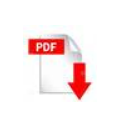|
In-situ investigation of deformation behavior in additively manufactured FeCoCrNiMn high entropy alloy
Mengyao Zheng a , Chuanwei Li a,* , Lunfeng Zhang a , Xinyu Zhang a , Zhenhua Ye a , Xudong Yang a , Jianfeng Gu a,b,**
a Institute of Materials Modification and Modelling, School of Materials Science and Engineering, Shanghai Jiao Tong University, Shanghai, 200240, China
b Shanghai Key Laboratory of Materials Laser Processing and Modification, Shanghai Jiao Tong University, Shanghai, 200240, China
* Corresponding author.
** Corresponding author. Institute of Materials Modification and Modelling, School of Materials Science and Engineering, Shanghai Jiao Tong University, Shanghai, 200240, China
Abstract
Additively manufactured high entropy alloys (AMed HEAs) usually have many distinctive microstructures, which will have a great impact on the mechanical properties. Revealing the role of different microstructures in the deformation process can provide guidance for the microstructure design of AMed HEAs. This paper used in-situ electron backscattered diffraction and digital image correlation tests to investigate the deformation behaviors of FeCoCrNiMn HEAs fabricated by laser directed energy deposition. The as-built FeCoCrNiMn HEAs have two kinds of microstructures: equiaxed and columnar. The equiaxed microstructure has no texture, the grain size is 28 μm, and the grain boundary misorientation conforms to theoretical distribution, whereas the columnar microstructure is composed of <101> oriented and coarse grains, and has a large number of low angle grain boundaries. In the deformation processes, <101> oriented grains are more prone to rotational deformation than <001> and <111>, but the tensile strain produced by < 101> is lower than <001> and higher than <111>. And compared with the coarse grains, the fine grains tend to coordinate the deformation from surrounding grains through grain rotation, and the strain concentrations are more readily to emerge in fine-grain regions. The average grain boundary geometric compatibility factor (m’) of equiaxed microstructure is 0.39, and that of columnar microstructure is 0.57, so the grain boundaries of equiaxed microstructure have a more effective role in impeding dislocations. In addition, the statistical result shows that the value of m’ is related to the grain boundary misorientation.

|